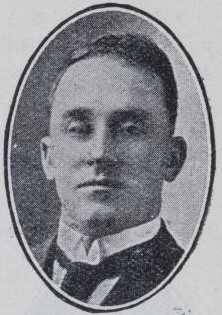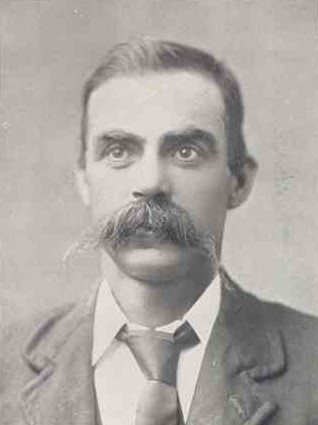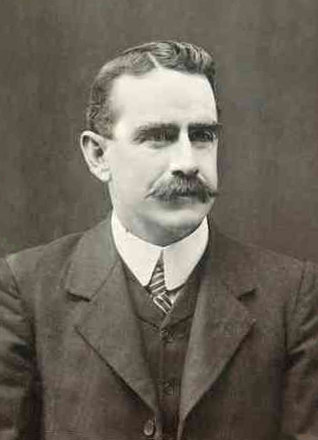
Crawford Vaughan was an Australian politician, and the Premier of South Australia from 1915 to 1917. He was a member of the South Australian House of Assembly from 1905 to 1918, representing Torrens (1905–1915) and Sturt (1915–1918). Elected for the United Labor Party, he served as Treasurer in the Verran government, succeeded Verran as Labor leader in 1913, and was elected Premier after the Labor victory at the 1915 state election.

Edgar Rowland Dawes was an Australian politician. He was a Labor Party member of the South Australian House of Assembly from 1930 until 1933, representing the electorate of Sturt. He was the leader of the official Labor Party in South Australia in the aftermath of the 1931 Labor split from May 1932 until his defeat at the 1933 state election.

Thomas Patrick Howard was an Australian trade unionist and politician. He was a member of the South Australian House of Assembly from 1933 to 1938, representing the Lang Labor Party (1933), South Australian Lang Labor Party (1933–1934) and Labor Party (1934–1938).

Henry Chesson was an Australian politician. He was a member of the South Australian House of Assembly from 1905 to 1918, representing Port Adelaide until 1915 and West Torrens thereafter. He represented the United Labor Party until being expelled in the 1917 Labor split, and thereafter represented the splinter National Party until his defeat at the 1918 election.
Douglas Henry Bardolph was an Australian journalist, trade unionist and politician.

William Joseph Denny was an Australian journalist, lawyer, politician and decorated soldier who held the South Australian House of Assembly seats of West Adelaide from 1900 to 1902 and then Adelaide from 1902 to 1905 and again from 1906 to 1933. After an unsuccessful candidacy as a United Labor Party (ULP) member in 1899, he was elected as an "independent liberal" in a by-election in 1900. He was re-elected in 1902, but defeated in 1905. The following year, he was elected as a ULP candidate, and retained his seat for that party until 1931. Along with the rest of the cabinet, he was ejected from the Australian Labor Party in 1931, and was a member of the Parliamentary Labor Party until his electoral defeat at the hands of a Lang Labor Party candidate in 1933.

Harry Jackson was an Australian politician who represented the South Australian House of Assembly seats of Stanley from 1906 to 1915 and Port Pirie from 1915 to 1918. He represented the United Labor Party until the 1917 Labor split, when he was expelled and joined the splinter National Party. He served as Speaker of the South Australian House of Assembly from 1911 to 1912.

Thomas Turner Thompson was an Australian politician. He was a member of the South Australian House of Assembly from 1927 to 1930, one of the two members for the Port Adelaide seat. He was variously described as a Protestant Labor Party or Independent Labor MLC.
Jules Langdon was an Australian politician who represented the South Australian House of Assembly seat of Thebarton from 1938 to 1942 as an independent.
Samuel Dennison was an Australian politician. He represented the South Australian House of Assembly multi-member seat of Wooroora from 1930 to 1938 for the Country Party and its successor the Liberal and Country League.

Edward Alfred Anstey was an Australian politician who represented the South Australian House of Assembly multi-member seats of Adelaide from 1908 to 1915 and North Adelaide from 1915 to 1921. He represented the United Labor Party until 1917, when he joined the National Party.

Thompson Green was an Australian politician who represented the South Australian House of Assembly multi-member seats of Port Adelaide from 1910 to 1915 and West Torrens from 1915 to 1918. He was a member of the United Labor Party until 1917, when he left to join the National Party in the 1917 Labor split.

William James Cooper Cole was an Australian politician. He was a member of the South Australian House of Assembly from 1910 to 1918, representing the multi-member seats of Stanley (1910–1915) and Port Pirie (1915–1918). He was a member of the United Labor Party until 1917, when he left to join the National Party in the 1917 Labor split.

John Frederick Herbert was an Australian politician who represented the South Australian House of Assembly multi-member seat of Wallaroo from 1912 to 1918. He represented the United Labor Party until he joined the National Party in the 1917 Labor split.
Maurice William Parish was an Australian politician who represented the South Australian House of Assembly multi-member seat of Murray from 1915 to 1918. He was elected at as a United Labor Party member, left the party to join the National Party in the 1917 Labor split, and became an independent in 1918.

John Frederick Drummond (Jack) Jonas was an Australian politician. He represented the South Australian House of Assembly multi-member seat of Port Adelaide from 1927 to 1933 for the Labor Party.
John Travers was an Australian politician. He represented the South Australian House of Assembly multi-member seat of Flinders from 1906 to 1910 and from 1912 to 1918.

Henry George Tossell was an Australian politician who represented the South Australian House of Assembly multi-member seat of Yorke Peninsula from 1915 to 1930 for the Liberal Union and Liberal Federation.
Richard Alfred O'Connor was an Australian politician. He was a Liberal Union member of the South Australian House of Assembly from 1915 to 1921, representing the multi-member seat of Albert.

The Kapunda Herald was a newspaper published in Kapunda, South Australia from 29 October 1864 to 25 January 1951. From 1864 to 1878 the masthead was subtitled "and Northern Intelligencer". It was published weekly, except for the period February 1872 to September 1894 when it appeared bi-weekly. When closed, the newspaper was merged with the Barossa News to become the Barossa and Light Herald.














